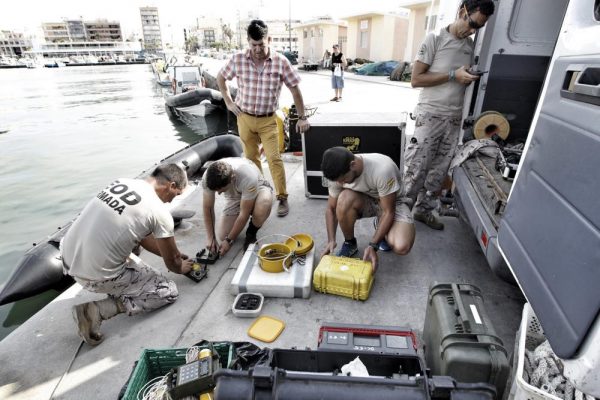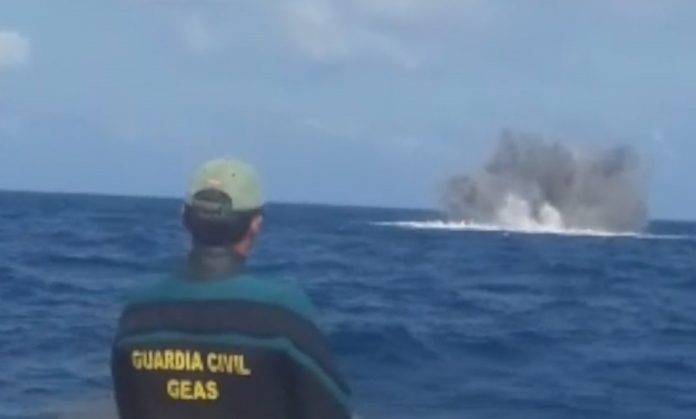The World War 2 Depth Charge that was found in the Marine Reserve just off the coast of Tabarca was eventually detonated on Friday afternoon by explosive experts from the Spanish Armed Forces.
The mine was discovered by members of a local diving club nestling on the seabed at 29 metres on Sunday. Members of the Underwater Activities Task Force (GEAS) travelled to the reserve and confirmed that it was a depth charge, possibly dropped by an aeroplane that was hunting submarines during World War II

A total of 8 navy divers took part in the operation, first inspecting both the site and the device to ensure that it was safe to be moved. There was also a naval patrol vessel deployed to the area to ensure that sightseers were kept away.
The mine was raised from the floor by a series of balloons before it was eventually moved by the divers to a sandy area 3 miles of the coast of Santa Pola. It was dragged on the end of a rope for about 2 miles by a naval patrol vessel, to an area for detonation.
The decision to move the device was taken so as not to cause damage to the reserve, a rich and protected ecological area, teeming with fish and other sea life.
The whole procedure was followed from very early in the morning by Government delegates, Juan Carlos Moragues and José Miguel Saval, who both declared themselves delighted with the outcom.
“It was important to get it away from the marine reserve,” said Moragues. “There are many small fragile animals such as gorgonian fans, lace corals and sponges – some of which are hundreds of years old and it was important that they weren’t damaged or disturbed.”
The Ministry of Agriculture and Fisheries had earlier banned diving in the waters off the island, for a distance of two miles, approximately 4km, from the Marine Reserve of Tabarca and La Llosa, until the Navy divers were able to deactivate the charge.
The Guardia Civil marked out the area and set up a permanent monitoring device to warn approaching boats and ships. Although diving was forbidden, visitors were still able to travel to the island.
Experts say that the charge was left following an attack on a German U77 submarine on 28 March 1943 by 48 Sqn RAF who were based in Gibraltar.
Although it was partially damaged, the submarine remained underwater, so the aircraft requested help from a second plane, a Lockheed A-28 Hudson from 233 Squadron which located the damaged U77 when it next came to the surface, about 30 miles northwest of the first attack.
During the 2nd attack off Tabarca, which lasted just over an hour, the Lockheed launched four depth charges which, according to the incident report written by the pilot, fell to within five meters of the submarine.
Just before it sank the commander of the U77, Oberleutnant zur See Otto Hartmann, ordered the vessel’s evacuation, but of the twenty sailors who were on board at the time, only nine managed to survive.





